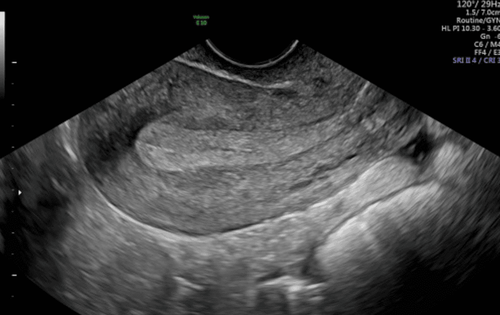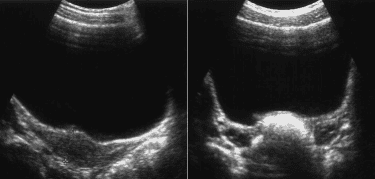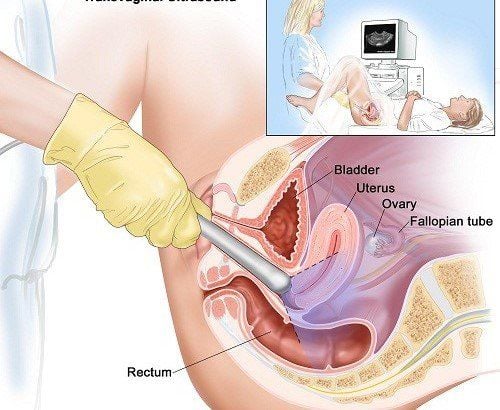This is an automatically translated article.
The article was professionally consulted with Doctor Pham Thi Mai Nhung - Obstetrician and Gynecologist - Department of Obstetrics and Gynecology - Vinmec International Hospital Da Nang.Many women experience abnormal vaginal bleeding between periods known as intermenstrual bleeding. There are many causes of this condition, so when you notice spotting or heavier bleeding between periods, you need to go to the medical facilities soon to find the cause, treat and evaluate the level of bleeding. abnormal vaginal bleeding.
1. What is abnormal vaginal bleeding?
Abnormal vaginal bleeding is bleeding from the uterus that is not on the days of a woman's period. It reflects hormonal disturbances on the endometrium or lesions in the cervical and vaginal regions. The condition is often unpredictable, unusually severe, can last for a long time, occurs frequently or occasionally. According to statistics, about 1-2% of women experiencing abnormal vaginal bleeding progress to endometrial cancer due to inadequate management.2. Causes of Abnormal Vaginal Bleeding
Irregular vaginal bleeding between menstrual cycles is not a normal condition of the body. The average menstrual cycle of a healthy woman usually lasts between 21 and 35 days. Vaginal bleeding that occurs over a day or a few days and is cyclical is considered normal vaginal bleeding. Any vaginal bleeding that falls outside of this time period is considered abnormal, and they can be caused by a range of factors, including:2.1. Hormonal imbalances: Estrogen and progesterone are two hormones that regulate a woman's menstrual cycle. They may experience abnormal vaginal bleeding if these hormones become unbalanced. Some of the following factors can affect a woman's hormone balance, including:
Ovarian dysfunction Thyroid problems including hypothyroidism or hyperthyroidism. Starting or stopping birth control pills: When starting any hormonal contraceptive, irregular bleeding can be a common sign during the first trimester. These methods of contraception may include: the use of oral contraceptives, an intrauterine device, the contraceptive patch, the implant, or the use of injectable birth control pills. Using birth control pills can cause hormonal imbalance in women
In some cases, ovulation can also affect and lead to an imbalance of the hormones estrogen and progesterone.

Sử dụng thuốc tránh thai có thể gây mất cân bằng nội tiết tố ở phụ nữ
2.3. Abnormal Vaginal Bleeding During Pregnancy Irregular Vaginal Bleeding During Pregnancy Doesn't Mean Miscarriage. However, if abnormal bleeding occurs, you need to immediately go to a medical facility or obstetric clinic for examination and diagnosis to early detect complications and provide appropriate treatment.
2.4. Uterine fibroids Uterine fibroids are growths of noncancerous cells that form in the uterus. Uterine fibroids are not uncommon in women who have given birth.
2.5. Infections Abnormal vaginal bleeding between menstrual cycles may be related to reproductive tract infections. Infection can cause inflammation and bleeding. Possible causes include:
Sexually transmitted infections Excessive vaginal hygiene: Vaginal hygiene is a daily necessity for women. However, deep douching can cause bacteria to enter or damage the vaginal lining leading to infection and bleeding. Injury during sex Pelvic inflammatory disease, marked by inflammation of the reproductive organs leading to scarring. In addition, a number of factors can also lead to vaginal bleeding, but they are very rare, including: Masturbation, prolonged stress, diabetes, gland disorders thyroid, overweight, obesity, lack of nutrition, protein energy....

Một số phụ nữ béo phì có thể xuất hiện tình trạng chảy máu âm đạo
3. Methods of evaluating abnormal vaginal bleeding
To be able to make an accurate assessment of abnormal vaginal bleeding, doctors will exploit the signs related to the patient's symptoms. This is very useful in tracking the menstrual cycle of the patient. The doctor will ask for the start and end time of the abnormal bleeding and the amount of bleeding between the last two menstrual cycles. In addition, the doctor will also talk about any symptoms the patient is experiencing along with all the medications they take during this period. Gynecological examination is also used to evaluate abnormal vaginal bleeding.Besides examining and taking medical history to determine the cause of abnormal vaginal bleeding, the doctor will order one or more tests including:
Blood tests: Monitor blood loss by recording the number of tampons per day or using a menstrual calendar. When anemia is suspected, a baseline blood count should be done to count Hb and Hct to rule out anemia. If hematologic disease is suspected, a complete blood count should be performed to count the platelet count. HCG test: The most common cause of abnormal vaginal bleeding during reproductive age is pregnancy. Therefore, the HCG test helps to rule out threatened miscarriage, incomplete miscarriage and ectopic pregnancy. Hormonal tests Tests for sexually transmitted diseases Thyroid function tests In terms of imaging, indicated tests include:
Pelvic ultrasound in difficult obese patients pelvis, patients with suspected ovarian or uterine diseases. Transvaginal ultrasound: A small hand-held device called a transvaginal transducer is inserted into the vagina to capture images of the endometrium, the lining of the uterine cavity, and the wall of the uterus, as well as the ovaries.

Siêu âm qua đường âm đạo giúp việc chẩn đoán hình ảnh rõ ràng và cụ thể hơn
To help customers detect and treat gynecological diseases early, Vinmec International General Hospital has a basic gynecological examination and screening package, helping customers detect early inflammatory diseases and help treat Easy, inexpensive treatment. Screening detects gynecological cancer (cervical cancer) early even when there are no symptoms.

Khám phụ khoa tại Vinmec là sựa lựa chọn hàng đầu của nhiều chị em phụ nữ
Abnormal vaginal bleeding Having menstrual problems: period abnormally long periods, irregular menstrual periods Abnormal vaginal discharge (smell, different color) Vaginal pain and itching Female clients have several risk factors such as poor personal hygiene, Unsafe sex system, abortion, ... Female customers have other symptoms such as: abnormal vaginal discharge, itching, pain in the intimate area, abnormal vaginal bleeding.
Please dial HOTLINE for more information or register for an appointment HERE. Download MyVinmec app to make appointments faster and to manage your bookings easily.
References: uofmhealth.org, healthline.com, radiologyinfo.org













